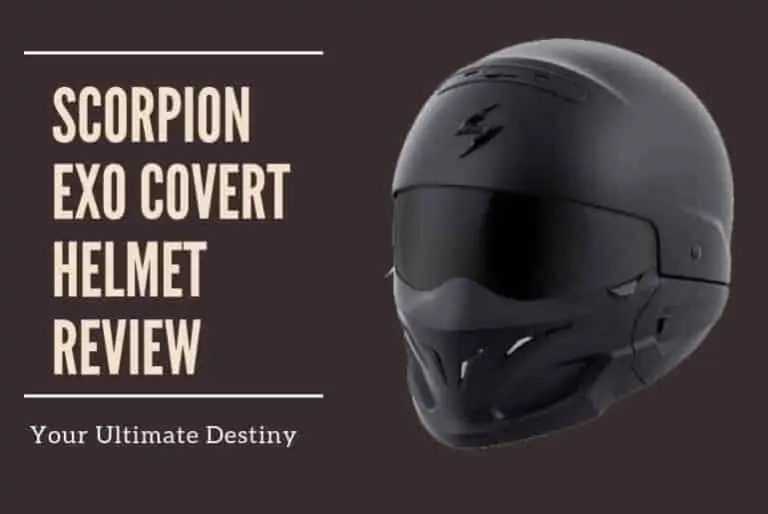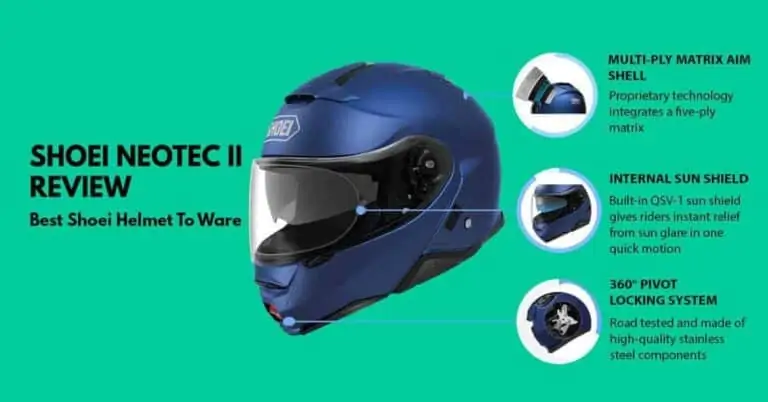Disclosure: As an Amazon Associate We earn from qualifying purchases.
Motorcycle helmets are designed for high speeds on paved roads, while snowmobile helmets are designed for cold weather and rough terrain. Protecting one’s head is of the utmost importance, regardless of the activity that is being undertaken.
When considering motorcycles and snowmobiles, helmets are crucial for safety. However, the two helmets are unique in their design and features. Motorcycle helmets are built to withstand high speeds on paved roads and to protect against impact. On the other hand, snowmobile helmets offer protection in cold weather conditions, with additional features such as a longer face shield and breath deflector.
Understanding the differences between the two helmets is important for safety when riding either of the machines. In this article, we’ll explore the differences between motorcycle helmets and snowmobile helmets, so you can make an informed decision when purchasing one.

Anatomy Of A Motorcycle Helmet
When riding, it’s important to protect your head; choosing the right helmet is paramount. But not all helmets are created equal, especially when considering the distinction between motorcycle helmets and snowmobile helmets. Let’s take a closer look at the anatomy of a motorcycle helmet to understand its parts and materials.
Description Of Each Part Of The Motorcycle Helmet
A motorcycle helmet consists of various individual components, which include:
- Outer shell: The outer layer of the helmet is typically made of a hard, impact-resistant material like polycarbonate or fiberglass. Its primary purpose is to protect the rider’s head from external blows and abrasions.
- Inner liner: The inner liner is the soft layer that sits against the rider’s head. It is usually made of expanded polystyrene (EPS) foam and serves to absorb impact and increase the helmet’s shock-absorbing capacity.
- Chin strap: The chin strap is an adjustable strap that secures the helmet in place under the rider’s chin. It plays a crucial role in keeping the helmet securely fastened to the rider’s head in the event of an accident.
- Visor: The visor is a transparent shield that protects the rider’s face from wind, debris, and bugs, as well as providing UV protection.
Materials Used For Each Part Of The Helmet
Each part of a motorcycle helmet is typically made from a different material, such as:
- Polycarbonate: This is a lightweight and inexpensive thermoplastic commonly used for the outer shell of motorcycle helmets.
- Fiberglass: Fiberglass helmets are generally more expensive than polycarbonate and provide greater impact resistance.
- EPS foam: The inner liner of the helmet is made of EPS foam, which compresses upon impact to absorb energy and protect the wearer’s head.
Importance Of Each Part In Protecting The Rider
Each part of the motorcycle helmet plays a crucial role in protecting the rider from harm. For example:
- Outer shell: The outer shell’s primary function is to prevent the rider’s head from coming into direct contact with foreign objects or surfaces that could cause injury or abrasion.
- Inner liner: The inner liner is designed to absorb impact and disperse the force of an accident. Without it, direct blows to the head could cause traumatic brain injuries or other serious head trauma.
- Chin strap: The chin strap is essential for keeping the helmet securely fastened to the rider’s head. If the helmet isn’t properly fastened, it can come off during an accident or impact, leaving the rider’s head unprotected.
- Visor: The visor protects the rider’s face, eyes, and vision from wind, dust, debris, and UV rays, which could cause temporary or permanent vision problems or even blindness.
To choose the best motorcycle helmet for safety, it is important to understand its structure and the materials it is made of. So, always choose your motorcycle helmet wisely, and make sure it has met all the safety standards before buying.
Anatomy Of A Snowmobile Helmet
Winter sports enthusiasts are constantly on the lookout for gear that can protect them optimally while they pursue their passion. A helmet is a crucial piece of gear for any rider looking to stay safe on the slopes. While choosing a helmet may seem straightforward, it’s essential to know the difference between a motorcycle helmet and a snowmobile helmet.
In this post, we will be focusing specifically on snowmobile helmets and their anatomy.
Description Of Each Part Of The Snowmobile Helmet
A snowmobile helmet consists of several intricate parts designed to provide essential protection to the rider while also offering comfort. These are:
- Outer shell: The outermost part of the helmet that protects the rider’s head against high-impact collisions. It’s usually made of strong, lightweight plastics or fiber-reinforced composites.
- Impact absorbing liner: The inner part of the helmet is designed to absorb the shock upon impact. It’s made of specialized foam that provides a cushion to the rider’s head.
- Eye port: The helmet’s opening that houses the shield; it should have a good seal with the shield to prevent the entry of the elements.
- Shield: The transparent cover attached to the helmet that protects the rider’s face from the wind and other debris while allowing clear vision.
- Chin strap: The strap that secures the helmet to the rider’s head and prevents it from coming off in the event of an accident.
Materials Used For Each Part Of The Helmet
The materials used for each part of a snowmobile helmet are carefully chosen to ensure the helmet’s efficacy and durability.
- Outer shell: Polycarbonate, fiberglass, or composite materials are typically used to form the helmet’s outer layer. These materials are strong, lightweight, and capable of withstanding high-impact collisions.
- Impact absorbing liner: Expanded polystyrene (EPS) foam is used for the impact-absorbing liner. It’s light, durable, and able to absorb the shock from impact effectively.
- Eye port: The eye port of a helmet is made of lightweight, shatter-resistant plastic materials like polycarbonate.
- Shield: The shield of a helmet is typically made of lightweight, shatter-resistant polycarbonate material.
- Chin strap: The chin strap is made of nylon or other high-strength materials that can withstand the force of impact.
Importance Of Each Part In Protecting The Rider
Each part of a snowmobile helmet plays a crucial role in protecting the rider while they engage in winter sports. Here’s how each part contributes:
- Outer shell: The sturdy outer shell protects the rider’s head against impact and damage in case of an accident.
- Impact absorbing liner: The impact-absorbing liner is the primary component that saves the rider from head injuries during an accident, as it absorbs the shock and transfers the load evenly across the helmet.
- Eye port and shield: The eye port and shield provide a clear view of the surroundings while also protecting the rider from the wind, snow, and debris.
- Chin strap: The chin strap is critical in keeping the helmet securely in place during high-velocity impact.
A snowmobile helmet is an essential piece of gear for anyone who plans on snowmobiling in the winter. It comprises several important components that offer the necessary protection to the rider while providing comfort. By understanding the anatomy of a snowmobile helmet, you can make an informed decision while purchasing one.
Key Differences Between Motorcycle And Snowmobile Helmets
Helmet Design And Shape
When designing helmets and deciding on their shape, there are significant differences between motorcycle helmets and snowmobile helmets:
- Motorcycle helmets have aerodynamic designs that reduce wind resistance, allowing riders to achieve high speeds comfortably.
- Snowmobile helmets, on the other hand, have a rounder shape to withstand the impact of snow and ice debris. The design also makes it easier for the rider to turn their head while wearing a helmet.
Ventilation Systems
Proper ventilation is essential for the comfort and safety of the riders. Here are a few differences in ventilation systems between motorcycle and snowmobile helmets:
- Motorcycle helmets have more significant air vents, allowing for better airflow during warm months and long journeys.
- Snowmobile helmets have fewer air vents to keep riders warm in the freezing cold. A single air vent located at the helmet’s top prevents snow and ice debris from entering the helmet, ensuring comfort and proper ventilation.
Visors And Shields
Visors and shields play a significant role in keeping the rider’s face safe and maintaining visibility on the road. Here are some differences between motorcycle and snowmobile helmets in this regard:
- Motorcycle helmets have clear visors that provide an unobstructed view of the road. Some models come with tinted visors to protect the rider from the bright sun.
- Snowmobile helmets have a clear face shield and a separate visor. The visor is an extra layer that keeps the rider’s face warm, and the clear shield prevents snow and ice debris from directly hitting the rider’s face.
Insulating Liners
Insulating liners are crucial for keeping riders warm in cold weather conditions. Here are some differences in insulation between motorcycle and snowmobile helmets:
- Motorcycle helmets have minimal insulation to keep riders cool and comfortable during hot weather.
- Snowmobile helmets have thicker insulation to keep riders warm in freezing temperatures. Fleece or woolen materials are commonly used to line snowmobile helmets.
Soundproofing Materials
Soundproofing is essential for preventing hearing damage and providing a comfortable ride. Here are some differences in soundproofing between motorcycle and snowmobile helmets:
- Motorcycle helmets have minimal soundproofing to allow the rider to hear traffic and surroundings for safety reasons.
- Snowmobile helmets have thicker soundproofing materials to block out the noise of the snowmobile’s engine and the wind. This reduces hearing damage and provides a comfortable ride.
While motorcycle helmets and snowmobile helmets may look similar at first glance, significant differences exist between the two types of helmets. It is crucial to choose the right helmet according to the type of riding conditions to ensure the rider’s safety and comfort on the road.
Choosing The Right Helmet
Importance Of Choosing The Right Helmet For Each Activity
Motorcycle helmets and snowmobile helmets are two different products that are designed for different activities. It is essential to choose the right helmet for each activity to ensure safety while riding. The wrong helmet may result in severe head injuries or even death.
Factors To Consider When Choosing A Helmet
When selecting a helmet, there are several factors to consider, including:
- Activity: Choose a helmet suitable for the activity you intend to engage in, whether it’s snowmobiling or motorcycle riding.
- Safety certifications: Ensure the helmet has passed safety tests and has received the needed safety certifications.
- Fit and comfort: Choose a helmet that fits comfortably and allows enough visibility.
- Helmet construction: Different helmet constructions come with different features. Some helmets may have removable liners, ventilation systems, or shield options.
- Helmet type: Different helmet types include full-face helmets, modular helmets, open-face helmets and half-shell helmets.
Importance Of Fit And Comfort
A helmet offers no protection if it does not fit properly. A poorly fitting helmet may result in the helmet coming off during an impact or not providing sufficient protection. A comfortable helmet is also important since a rider is more likely to wear it if it is comfortable.
Safety Certifications And Ratings
Several safety certifications and ratings determine the safety of a helmet. When shopping, look for helmets with the following certifications and ratings:
- DOT: The department of transportation certifies helmets that meet safety standards.
- ECE: Economic commission for europe certifies helmets that meet safety standards.
- SNELL: A nonprofit organization that sets helmet safety standards higher than dot and ECE.
Cost Considerations
While safety must be the priority when choosing a helmet, cost is also an important factor. Before purchasing a helmet, ensure that it is within your budget and a sound investment for the type of riding you intend to do.
High-priced helmets usually come with additional features or higher safety ratings that may not be necessary for your situation.
Remember that choosing the right helmet is essential and can determine your safety. Consider all the factors, including activity, safety certifications and cost, before making a purchase.
Helmet Maintenance And Care
Importance Of Proper Helmet Maintenance
Proper motorcycle and snowmobile helmet maintenance is crucial to ensure rider safety. Regular maintenance not only prolongs a helmet’s lifespan but also ensures maximum safety while on the road. Here are some reasons why proper helmet maintenance is highly essential:
- Regular maintenance helps identify hidden damages that can be caused due to regular wear and tear of the helmet.
- It ensures that the helmet is functioning correctly, and all the critical components are working together flawlessly.
- Apart from improving helmet longevity, regular maintenance reduces the risk of helmet failure during an accident.
Steps To Take After An Accident
After an accident, it is crucial to inspect your helmet for any visible damages that might have affected its integrity. Here are some steps to follow:
- First and foremost, safely remove your helmet and place it on a flat ground to inspect its integrity.
- Check for any cracks or damages to the helmet shell.
- Inspect the helmet’s interior for any visible damages, such as broken pads or punctures.
- Examine the chin strap to ensure that it’s still functional.
- If there are any visible damages, consider replacing the helmet immediately.
Cleaning And Storage Tips
Cleaning and proper storage are equally essential in helmet maintenance to prolong its lifespan. Here are some tips to keep in mind:
- Always clean your helmet after each use to remove sweat and dust that might have accumulated on it.
- Clean with mild soap, and never use harsh abrasives or solvents that might damage the finish.
- Avoid exposing your helmet to direct sunlight and high temperatures, as these might damage the foam.
- Store the helmet in a cool, dry place.
- Always store helmets away from gasoline, cleaning fluids, and other chemicals.
How Often To Replace A Helmet
Helmets are not meant to last a lifetime, and it’s essential to know when to replace them. It’s recommended to replace helmets every five years, even if they appear intact. Here are some signs that indicate that you might need to replace your helmet:
- If there is damage to the helmet shell or visible cracks, it is important to address this issue immediately to ensure your safety.
- The foam has compressed or is harder than usual.
- The helmet has undergone an accident or impact.
- The helmet’s interior or exterior parts are damaged or have become loose.
Always bear in mind that properly maintaining your helmet is absolutely crucial. Taking this step will ensure the helmet lasts longer and keep you safe when you’re riding. Remember, it’s always wiser to prioritize your safety rather than regretting any potential oversight later on.
Frequently Asked Questions For Difference Between Motorcycle Helmet And Snowmobile Helmet
What Is The Main Difference Between A Motorcycle Helmet And A Snowmobile Helmet?
The main difference between motorcycle helmets and snowmobile helmets is their design and intended use. Snowmobile helmets have a breath box and warmer insulation for colder weather, while motorcycle helmets are designed for better ventilation and aerodynamics.
Can I Use A Motorcycle Helmet For Snowmobiling?
While you can technically use a motorcycle helmet for snowmobiling, it is not recommended due to differences in design. Snowmobile helmets are better equipped for the colder temperatures and higher speeds associated with snowmobiling.
What Makes Snowmobile Helmets Better For Colder Weather?
Snowmobile helmets often include a breath box to prevent fogging. They are also designed with extra insulation to keep the rider’s face and head warmer in cold temperatures. Additionally, they typically have a visor that can be removed or adjusted to accommodate goggles.
Are Snowmobile Helmets More Expensive Than Motorcycle Helmets?
Price variations between snowmobile and motorcycle helmets can depend on the brand, features, and materials used in construction. However, in general, snowmobile helmets tend to be more expensive due to their added insulation, breath box, and other features specific to snowmobiling.
Are There Any Safety Standards That Apply To Both Types Of Helmets?
Motorcycle and snowmobile helmets must meet safety standards set by the US Department of Transportation (DOT) to ensure rider safety. Additionally, snowmobile helmets may also have an additional safety certification from the snell memorial foundation.
Conclusion
Overall, choosing the right helmet for your motorcycle or snowmobile can mean the difference between life and death. There are important distinctions to be made between motorcycle helmets and snowmobile helmets. While motorcycle helmets are designed primarily for impact, snowmobile helmets are designed for both impact and cold weather protection.
Snowmobile helmets come with added features such as breath boxes and double lenses to prevent fogging. It’s important to choose a helmet that meets safety standards and fits snugly on your head. Don’t forget to consider your personal preferences and needs when choosing between a motorcycle and a snowmobile helmet.
Ultimately, investing in a quality helmet is an investment in your safety while enjoying your ride. So, it is crucial to pick a helmet based on your requirements and take the necessary safety measures. Stay safe and enjoy your ride.





